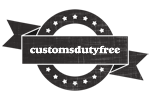Serbia is a landlocked country located at the crossroads of Central and Southeastern Europe, covering the central part of the Balkans. Serbia is bordered by Bosnia and Herzegovina, Bulgaria, Croatia, Hungary, Kosovo, Macedonia, Montenegro, and Romania. The geography of Serbia is varied and includes fertile plains, limestone ranges, and in the southeast: the Dinaric Alps and the Carpathian Mountain range. The government system is a republic; the chief of state is the president, and the head of government is the prime minister. Serbia has a mixed economic system in which the presence of the state in the economyThe management of money, currency and trade of a nation. The... is considerable, but there is limited private sectorThe part of a country's economy which is owned and run for p... freedom. Serbia is a member of the Central European Free Trade AgreementAn agreement, usually between countries, to limit or change ... (CEFTA).
High unemploymentAn economic situation in which jobless people, often those w... and stagnant household incomes are ongoing political and economic problems. Structural economic reforms needed to ensure the country’s long-term prosperity have largely stalled since the onset of the global financial crisis. Growing budgetAllocation of funds or the estimation of costs for a departm... deficits constrain the use of stimulus efforts to revive the economyThe management of money, currency and trade of a nation. The... and contribute to growing concern of a public debtAlso known as National Debt. The total amount of money owed ... crisis, given that Serbia’s total public debtAlso known as National Debt. The total amount of money owed ... as a shareAny of the equal units into which a company's capital stock ... of GDP more than doubled between 2008 and 2014. Serbia’s concerns about inflationNormally referring to the economy of a country, inflation is... and exchange-rate stability preclude the use of expansionary monetary policy. During 2014 the SNS party addressed issues with the fiscal deficit, state-owned enterprises, the labor marketThe commercial activity of buying and selling goods and serv..., construction permits, bankruptcy and privatization, and other areas.
Major challenges ahead include: high unemploymentAn economic situation in which jobless people, often those w... rates and the need for job creation; high government expenditures for salaries, pensions, healthcare, and unemploymentAn economic situation in which jobless people, often those w... benefits; a growing need for new government borrowing; rising public and private foreign debtMoney owed to another person or organisation, such as a loan...; attracting new foreign direct investmentMoney or capital that is invested in a business or in an acc...; and getting the IMF program back on track. Other serious longer-term challenges include an inefficient judicial system, high levels of corruptionLack of honesty or integrity. Illegal behaviour, such as bri..., and an aging population. Factors favorable to Serbia’s economic growthAn increase in a region's or nation's production of goods an... include its strategic location, a relatively inexpensive and skilled labor force, and free tradeThe buying and selling or exchange of goods and services. Th... agreements with the EU, Russia, Turkey, and countries that are members of the Central European Free Trade AgreementAn agreement, usually between countries, to limit or change ....
Important Details
- Country ISO3 : SRB
- Country Code : 688
- Income Group : Upper Middle Income
- Lending Category : IBRD
- Region : Europe and Central Asia
- Currency Unit: Saudi Riyal (hal’l, SR)
- WTO Member : Yes
- TradeThe buying and selling or exchange of goods and services. Th... organisations : WTO, OPEC, G-20 major economies, BIS, ICS, IOS, WCO, GCC, World Bank IMF
- world rank : 77
- Regional Ranking : 33rd in Europe

